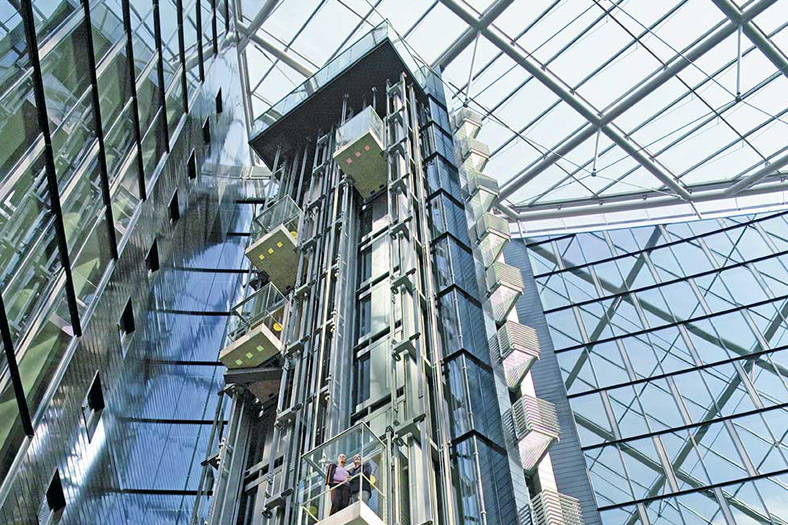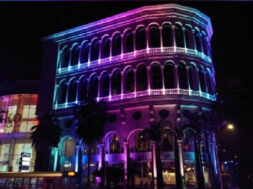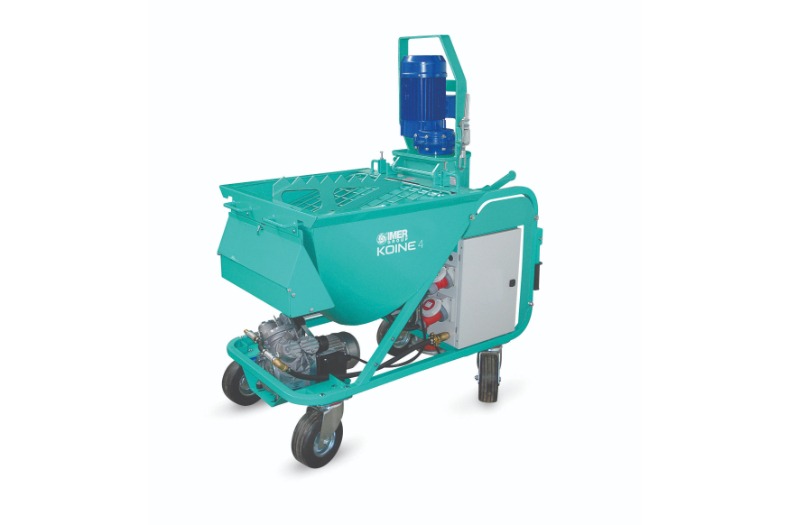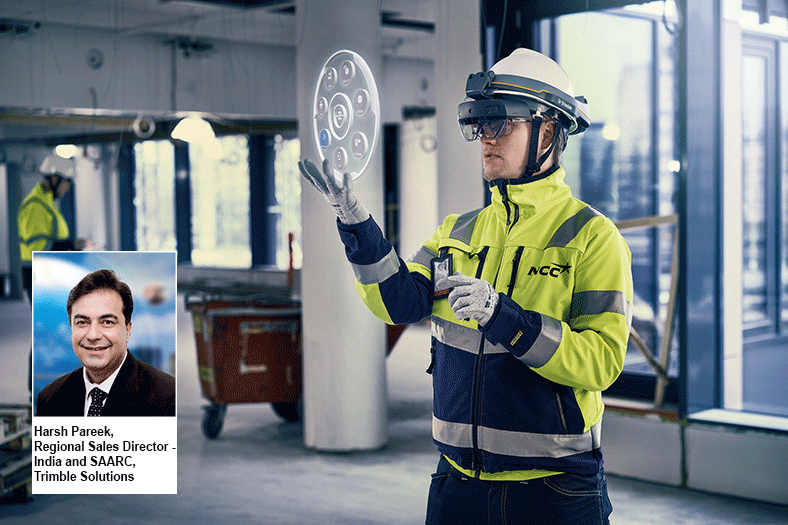Can elevators be energy-efficient?

An exclusive report on innovation in the field of elevators towards achieving greater energy efficiency.
Earlier, energy efficiency was not a term associated with elevators, but with the rapid urbanisation in the country and development of smart cities and new infrastructure projects, there is a need for taller buildings with even more efficient and innovative mobility solutions.
Energy-efficient elevators
The growing number of tall buildings, malls and industrials areas has created a huge market for elevators and its components. This tremendous progress has been so rapid that it has made the Indian elevator market the second largest in the world and it is further expected to grow at 8.9 per cent CAGR from 2016 crossing 104,000 units by 2021. The Indian elevators market, which is chiefly driven by rising urbanisation and the growing construction industry in developing economies is witnessing a major shift from conventional to smart and energy-efficient elevators.
Vincent Pinto – Sr. Vice President NI, Business, Schindler India states, “Elevators are rated according to their energy performance. They range from ‘A’ to ‘G’ with ‘A’ being the best-in-class system. The rating combines measurements of both standby and travel energy. The elevator’s frequency of use, travel height and speed are also considered as they have a strong influence on the rating. The measurements and classification are a guideline for Schindler to further contribute to sustainable building development. Selected measurements run by Schindler and third parties show that the Schindler elevators can provide an energy efficiency classification in the ‘green’ range from ‘A’ to ‘B’.”
Pinto also shares his contribution towards technology, Schindler products are at the forefront in usage of newer technologies which help reduce the total energy consumption which include regenerative drives, highly efficient motors and drive systems, automatic switch-off of car lighting if elevators are not in use, LED car lighting technology, Use of highly efficient roller guide shoe, low-friction mechanics, traffic management system, automatic switch-off display of landing operating panel, to name a few. Destination control systems like Schindler’s PORT, take it a step further where passengers select their destination floor before entering the elevator which allows grouping people travelling to the same floor thereby reducing the number of intermediate stops and improves the elevator system efficiency and energy saving.
Sebi Joseph, President, Otis India informs, demand for ‘Green’ elevators has increased over the last few years. As of Jan 2018, the Indian Green Building Council (IGBC) has 4.72 billion sq ft of green building footprint and 4,396 registered projects.
Joseph says, “Otis’ flagship products, the Gen2 range, are geared towards efficiency whilst providing environmentally responsible features and benefits. Some of the key components of the Gen2 range are the coated steel belt, the ReGen drive, the permanent magnet machine and the Otis’ PULSE system all of which, when combined, increase the life, efficiency, safety and reliability of the elevator.” Otis is the major player of this technology, which helps to achieve substantial energy savings and facilitates environment responsibility.
While sharing the knowledge on the product Joseph informs, “Otis has sold more than 5,00,000 Gen2 elevators worldwide since its launch. The reason for this tremendous success is that developers and building owners are becoming environmentally conscious and thereby aim for green certifications like LEED etc. Otis’ Gen2 Equipment and ReGen drive technology supports these green buildings. In fact, a Gen2 elevator with ReGen regenerative drive can reduce energy consumption by 75 per cent compared to traditional elevators with conventional drives.”
Bharat Vishnani, Managing Director, Thyssenkrupp Elevator (India) says, “There is a growing need for smart and energy efficient elevators as they offer many conveniences and advantages not available with traditional elevators. They can improve energy efficiency, reduce wait times, integrate access control features, and allow for better control of elevator traffic. The growing number of high-rise and super tall buildings around the world, strict energy efficiency requirements, growing security concerns, and increasing demand for convenience is driving the growth of the smart, energy efficient elevator market.”
At the Energy Efficiency Global Forum in Washington DC Thyssenkrupp recently showcased its latest innovation in making urban mobility greener: a net-zero energy system which can be used for existing elevators. With buildings now accounting for as much as 40 per cent of global energy consumption, this breakthrough marks a milestone moment for the building industry and opens the door to more energy-savvy technologies being implemented to tackle resource scarcity.
‘Energy creating’ elevators are already popular, converting the elevator’s kinetic energy into electricity that can be fed back into the building’s power grid. Thyssenkrupp installed this solution at the One World Trade Center in New York, where the elevators regenerate energy in an amount that could feed the building’s entire lighting system.
But the new net-zero concept goes one step further, focusing on improving energy efficiency even when the elevator is idle, which can be as much as 70 per cent of its working life. The design uses new controllers which trigger ‘hibernation’ or ‘sleep’ modes in idle cabins thus significantly reducing the energy demand. The required energy can be generated using solar panels no larger than the footprint of the elevator shaft, creating net-energy positive systems that generate more energy than they consume.
Most significant energy efficient products
Otis’s Gen2 elevator with a ReGen drive
As urbanisation drives the increased need for housing, the need for smart and efficient technologies to support growth will become a must. This is why there is an increasing demand for ‘green’ elevators, such as the Otis Gen2 elevator with a ReGen drive that combined together can reduce energy consumption by 75 per cent compared to conventional systems with non-regenerative drives. The Gen2 range of elevator is available in various configurations and speeds to suit both commercial and residential applications.
Joseph informs, “As for existing elevators, they can be made more energy efficient by adding variable frequency drives (VF drive) in the door system and elevator control system. This helps to optimise power consumption by better regulating power.”
ReGen drives can additionally be fitted to an existing system so that energy generated by the elevator can be fed back into the building’s grid. Auto-fan and auto-light switch off operations can also be adopted and LED lights can be used to replace tube lights inside the elevator car.
Thyssenkrupp’s TWIN the fast and energy efficient elevator
Thyssenkrupp has significant advancement in elevator technology by introducing smarter and energy efficient elevator solutions.
TWIN the fast and energy efficient elevator system from Thyssenkrupp comes equipped with intelligent traffic control, which optimises traffic automatically and reduces empty runs. This state-of-the-art system has two cabs running independently in the same shaft, each with its own counterweight, safety and drive equipment. With reduced shaft core space and construction costs, the TWIN elevator system offers the most flexible elevator solution with an eco-conscious heart.
Vishnani says, “Our ground breaking rope-free elevator system MULTI, is set to revolutionise tall building construction. MULTI harnesses the power of linear motor technology to move multiple cars in a single shaft both vertically and horizontally! With MULTI, multiple cabins travel safely up one shaft and down another in a single continuous loop, much like a circular train system on a vertical plane. The only visible difference to passengers – and it’s a welcome one – is that the doors open every 15 to 30 seconds, despite having fewer shafts compared to standard elevator systems.”
MULTI consolidates multiple carriages into fewer shafts. It reduces the elevators’ footprint by up to 50 per cent while increasing passenger throughput by at least as much. MULTI may also help reduce the building’s overall size, external surface area and total energy consumption.
The company integrated advances in lightweight design, including new lightweight carbon composites, to reduce MULTI’s cabin and door weight by up to 50 per cent. Eliminating the ropes and counterweights of conventional elevators also decreases the mass of the elevator system.
MULTI is set to revolutionise tall building construction. With MULTI’s rope-free system, architects and developers are no longer restricted in their designs by concerns about elevator shaft height and vertical alignment. MULTI opens the door to design possibilities in all directions.
Schindler’s 3300 is very energy efficient
Schindler elevator range includes products namely the 3100, 3300, 5300, 5500 and 7000. All the product are in the efficiency classification ‘green’ range from ‘A’ to ‘B’.
“The Schindler 3300 is very energy efficient. In fact, it received a best ‘Class A’ ranking on the independent VDI4707-1 standard for energy efficiency. Thanks to the regenerative power factor 1 drive technology, the Schindler 3300 uses up to 30 per cent less travel energy compared to conventional technology. Excessive energy is ‘clean’, allowing it to be fed back to the grid without causing equipment interference due to harmonic distortion. When not in use, the Schindler 3300 consumes up to 40 per cent less energy for inverter, controls, lights and ventilation. Wake up is instantaneous. LED lights have an extremely long service life, up to 20 times longer than standard light bulbs, while consuming less energy. All ceilings and operating panels in the Schindler 3300 are equipped with LED lights as standard,” informs Pinto.
The Schindler 7000 is at the forefront with high rise elevators that follow an efficient system approach, resulting in clever, fully engineered products in which all parts harmoniously interplay and are perfectly adjusted to each other. The following technologies lead to increased energy efficiency:
Drive:
- Synchronous and asynchronous gearless motor technology
- Outstanding ACVF technology
- Best in class Power factor 1 technology and THD (total harmonic distortion) of < = 5 per cent
- Top efficiency factors
- Reduction of energy consumption
- Return of regenerated energy to power line.
Car:
- Automatic switch-off of car lighting if elevators are not in use
- LED car lighting technology
- Use of highly efficient roller guide shoe.
Door:
- Highly efficient synchronous and asynchronous motor
- Low-friction mechanics.
Traffic Management System:
- Schindler development: intelligent, energy-saving application thanks to latest micro processor technology
- More performance with fewer elevators
- Direct travel with minimum stops
- Faster availability of cars
- Reduction of empty car operation
- Automatic switch-off display of landing operating panel.
Elevators are rated according to their energy performance. They range from ‘A’ to ‘G’ with ‘A’ being the best-in-class system.
Vincent Pinto – Sr. Vice President, NI Business, Schindler India
Energy efficient elevators helps to achieve substantial energy savings and facilitates environment responsibility.
Sebi Joseph, President, Otis India
86
Cookie Consent
We use cookies to personalize your experience. By continuing to visit this website you agree to our Terms & Conditions, Privacy Policy and Cookie Policy.









